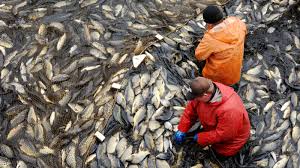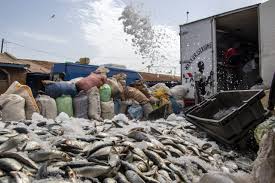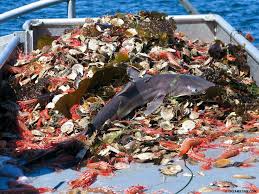This article will define Fisheries Environmental Impact Assessment (FEIA). The reader will become acquainted with the definition and be able to understand the scope of Fisheries Environmental Impact Assessment (FEIA).
Read Also: CAUSES AND SOLUTIONS OF EGG GLUT IN EGG PRODUCTION
Definition of Fisheries Environmental Impact Assessment

A fisheries impact assessment is part of an environmental impact assessment (EIA) study for a proposed development that may affect fishing and aquaculture activities, fisheries resources, habitats, and aquaculture sites. It aims at providing sufficient and accurate data to allow complete and objective predictions and evaluations of the potential fisheries impacts.
An environmental assessment is an examination of the environmental impacts of fishing activities authorized under a proposed fishery management strategy. The term “environmental” includes biological, economic, and social aspects.
The environmental impact statement will predict the impacts of fishing on target species, by-catch species, important fish habitats, the broader ecosystem, and economic and social issues. It also considers the impact on the resource from other fishing activities and other non-fishing activities.
The purpose of fisheries environmental impact assessment is to identify, assess, and describe the likely impact of proposed activities on the environment, analyze possibilities for the prevention and mitigation of such impacts, and make proposals regarding the choice of the most suitable solution.
Read Also: How to Increase Egg Production in Commercial Layers
Scope of Fisheries Environmental Impact Assessment

EIA is a management tool that provides information upon which decisions may be taken. It must involve the participation of various groups or stakeholders, such as project proponents or developers, investors, regulators, planners, local communities, non-governmental organizations, and politicians who will make decisions about a proposed major activity.
It is increasingly a requirement for international assistance for grants and loans from major donors, investors, and various financial and development organizations such as the World Bank, European Union, and African Development Bank, among others.
The potential scope of a comprehensive EIA process is considerable and could include the appraisal of policies, plans, programs, and specific development projects. The primary purpose is to encourage the consideration of environmental issues in planning and decision-making to ensure that actions are compatible with the environment.
Worldwide, EIA is the most commonly utilized tool for evaluating environmental concerns, sustainability issues, and developing mitigation measures for new development projects.
The EIA system must recognize the interconnectedness and complexity of impacts on the environment and social systems, sometimes yielding unexpected effects. It must also recognize that some of the key impacts of developments are found away from the project site, elsewhere in the ecosystem, outside the community, or linked to parallel developments in the supply chain.
EIA serves at least three main purposes:
- Inform a consenting or licensing decision;
- Identify mitigation measures to minimize any possible environmental impacts;
- Provide the framework for follow-up.
EIA was developed for other sectors but has been adapted for aquaculture. The requirements and implementation of aquaculture EIAs vary from country to country, depending on the technology and systems applied (intensive vs. extensive, large-scale or small-scale, fed vs. non-fed, etc.).
EIA is most commonly applied to intensive marine finfish and shrimp culture and to proposals for large-scale shrimp farm developments. However, some countries do not apply EIA to aquaculture development but rather rely on alternative environmental management procedures.
Full EIA is not applied to the bulk of global aquaculture production because most production is small-scale, and in many cases, it is a traditional activity. It is important to recognize that many small-scale aquaculture activities could have significant impacts on the recipient water body, and therefore, some form of strategic environmental impact assessment is needed to cover such added effects. Properly implemented EIA seeks to:
i. Concentrate on significant environmental impacts, considering the issues that matter;
ii. Adjust to the realities, issues, and circumstances of the project proposals based on the best available information;
iii. Provide appropriate opportunities to inform and involve interested and affected parties, with their inputs and concerns addressed explicitly;
iv. Be a clear, easily understood, and open process with public consultation;
v. Apply the “best doable” methodologies to address the impacts and issues being investigated;
-vi. Identify measures for impact mitigation that work and can be implemented;
-vii. Be carried out with rigor, fairness, objectivity, and impartiality;
-viii. Impose the minimum cost burden on proponents, consistent with meeting process requirements and objectives;
-ix. Provide the framework for assessing impacts during operation and adjusting to minimize these when appropriate.
This article has outlined the meaning of FEIA. The reader should now be able to define and explain the concept and its nature in simple terms, while also appreciating the purpose of EIA in ensuring the compatibility of projects, plans, or programs with the receiving environment.
Do you have any questions, suggestions, or contributions? If so, please feel free to use the comment box below to share your thoughts. We also encourage you to kindly share this information with others who might benefit from it. Since we can’t reach everyone at once, we truly appreciate your help in spreading the word. Thank you so much for your support and for sharing!
Read Also: Homeowners Insurance Complete Guide

